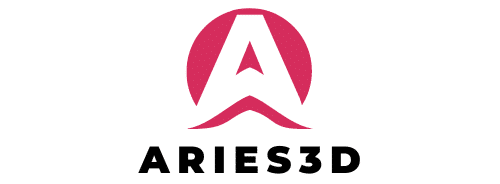How Can Technology Facilitate More Effective Water Conservation Strategies?

Water, the lifeblood of our planet. Yet, our water resources are under severe strain due to overconsumption, climate change, and rapid urbanization. It’s a crisis that screams for immediate attention and actionable solutions. And thanks to technological advancement, we now have at our disposal an array of innovative tools and systems that can help us implement more effective water conservation strategies.
From utilizing artificial intelligence to harnessing the power of Internet of Things, we’ll explore how technology can facilitate water conservation, enabling us to manage our water resources more efficiently and sustainably.
A lire également : Unlock creativity with a free ai voice generator tool
Harnessing the Power of Artificial Intelligence
Artificial intelligence (AI), once a concept relegated to science fiction, is now a reality with vast potential for various sectors, including water conservation.
AI is an umbrella term that refers to the simulation of human intelligence processes by machines, especially computer systems. In the context of water conservation, AI can be applied to predict water demand, detect leaks, optimize irrigation, and improve wastewater treatment.
A découvrir également : The future of generating text from images: upcoming trends and developments
For instance, AI-powered software can analyze historical water usage data to accurately predict future water demand. This can help water suppliers to better manage their resources and reduce wastage. Furthermore, AI algorithms can detect anomalies in water usage patterns, which may indicate leaks. Early detection of leaks can save significant amounts of water and money.
On the agricultural front, AI can enable smart irrigation systems that deliver water to crops with precision, reducing wastage due to over-irrigation. AI can also enhance wastewater treatment by optimizing the processes involved, leading to a more efficient use of water.
Leveraging the Internet of Things
The Internet of Things (IoT) refers to the network of physical devices, vehicles, appliances, and other items embedded with sensors, software, and network connectivity which enable these objects to connect and exchange data.
The IoT has the potential to revolutionize water conservation efforts by providing real-time data about water usage and wastage, enabling more efficient and sustainable use of this precious resource.
Smart meters are one example of IoT technology. These devices provide real-time information about water usage, allowing consumers to monitor and control their water consumption more effectively. They can also send alerts when unusual water usage patterns are detected, possibly indicating a leak, thus saving water and money.
Another IoT application is smart irrigation systems that use soil moisture sensors to determine the exact amount of water needed by plants. This not only conserves water but also improves plant health and productivity.
Utilizing Remote Sensing Technology
Remote sensing is the acquisition of information about an object or phenomenon without making physical contact with the object. In the context of water conservation, remote sensing technology, like satellites and drones, can provide valuable data about water resources.
For example, satellites can provide data on rainfall patterns, soil moisture levels, and changes in water bodies. This data can help in predicting droughts, managing water distribution, and monitoring the health of our water bodies.
Drones, on the other hand, can provide high-resolution, real-time images of water bodies. This can help in identifying water pollution sources, detecting leaks in water infrastructure, and monitoring the health of our water bodies.
Embracing Blockchain Technology
Blockchain, the technology behind cryptocurrencies like Bitcoin, is showing promise in the field of water conservation. Blockchain is a decentralized ledger of all transactions across a peer-to-peer network.
In the context of water conservation, blockchain can provide a transparent and secure platform for water trading. For instance, farmers who have surplus water can trade with those in need, promoting efficient use of water resources.
Blockchain can also facilitate the implementation of smart contracts, which are self-executing contracts with the terms of the agreement directly written into code. This can ensure that water resources are allocated and used in an equitable and sustainable manner.
Adopting Green Technology
Green technology, also known as clean technology, refers to the use of science and technology to create products and services that are environmentally friendly. In the water conservation realm, green technology can help in reducing water consumption and improving water quality.
For instance, water-efficient appliances, like low-flow showerheads and dual-flush toilets, can significantly reduce water consumption in households. Similarly, greywater recycling systems, which reuse water from showers and sinks for irrigation or toilet flushing, can save considerable amounts of water.
On the water quality front, green technologies like biofiltration systems and constructed wetlands can help in purifying polluted water, making it safe for human use or returning it to the environment in a cleaner state.
In conclusion, technology holds immense potential in facilitating more effective water conservation strategies. As we move forward, it’s crucial to embrace these technologies and integrate them into our water conservation efforts. Our future, and the future of our planet, depends on it.
Expanding through Nanotechnology
Nanotechnology, the manipulation of matter on an atomic, molecular, and supramolecular scale, presents vast opportunities for water conservation. It is an emerging field that can significantly contribute to the efficient management of our water resources.
One primary application of nanotechnology in water conservation is the development of nanofiltration systems for water treatment. These systems leverage the small scale of nanomaterials to filter out contaminants from water, providing a more efficient and cost-effective solution than traditional filtration methods. Furthermore, the filtered water can be reused, thereby reducing the overall water consumption.
Nanotechnology can also help in detecting water pollution at a very early stage. Nanosensors, tiny devices that can detect changes in the physical or chemical properties of their environment, can identify traces of pollutants in water bodies. Early detection of pollution can prevent further contamination and protect the health of our water systems.
Moreover, nanotechnology can play a significant role in improving irrigation systems. For instance, nanoporous materials can be used to regulate water release in soil, significantly reducing water wastage.
Innovating through Biotechnology
Biotechnology, the use of living systems and organisms to develop or make products, can also contribute to more efficient water conservation strategies. It is an area that has seen significant developments over the years, with multiple applications in water management.
Microorganisms, for instance, can be engineered to clean up polluted water bodies. These bioengineered organisms can break down harmful chemicals into less harmful substances, thereby purifying the water. This process, known as bioremediation, not only cleans the water but also reduces the need for chemical treatments, making it a more sustainable solution.
In agriculture, biotechnology can be used to develop drought-tolerant and water-efficient crops. These genetically modified crops require less water to grow, thus conserving water.
Finally, biotechnology can also help in desalination, the process of removing salts from seawater to make it suitable for irrigation and human consumption. Biotechnological methods, like the use of certain bacteria, can desalinate water more efficiently and sustainably than conventional methods.
Conclusion
Water is an essential resource, one that we cannot afford to waste. As the demands on our water supply continue to increase, it is absolutely crucial that we explore and leverage all available technologies to conserve and manage our water resources more effectively. From artificial intelligence and IoT to remote sensing, blockchain, green technology, nanotechnology, and biotechnology, the potential for technological innovation in water conservation is immense. As we move forward, it is our responsibility to ensure that these technologies are adopted and integrated into our water management strategies. Our survival, and the survival of our planet, depends on it.
